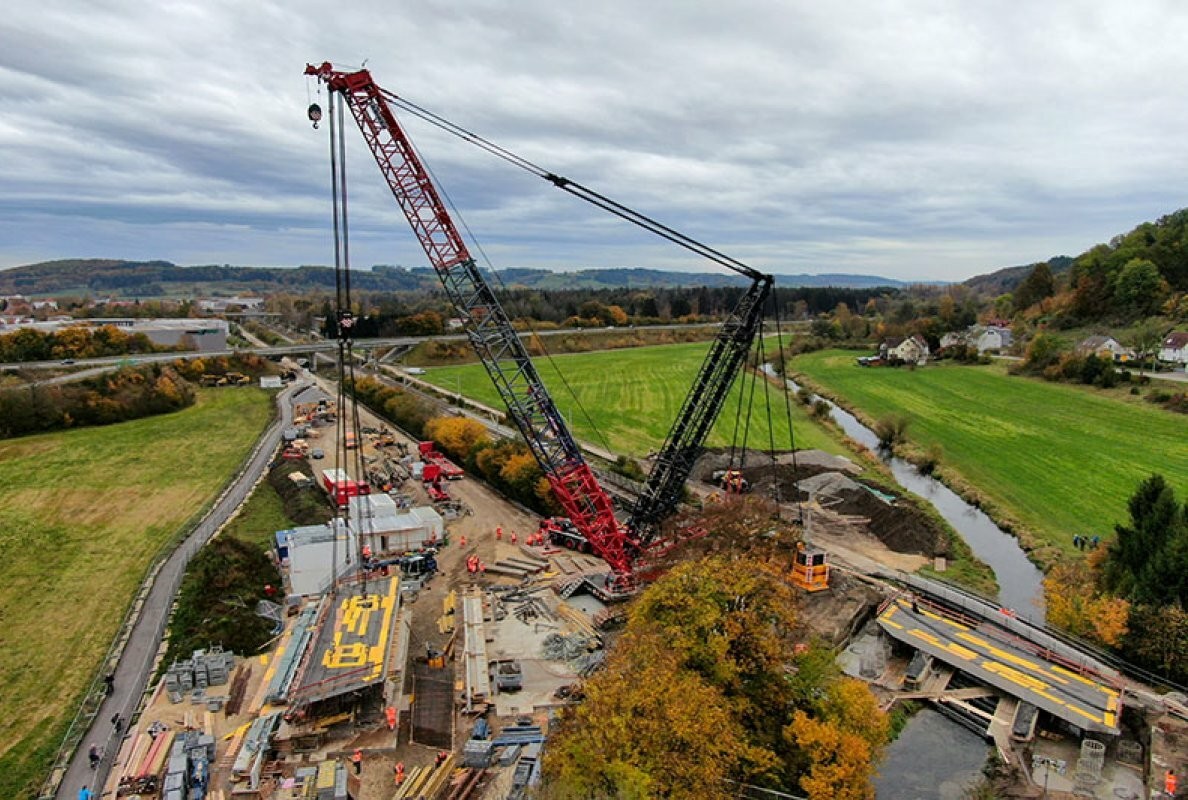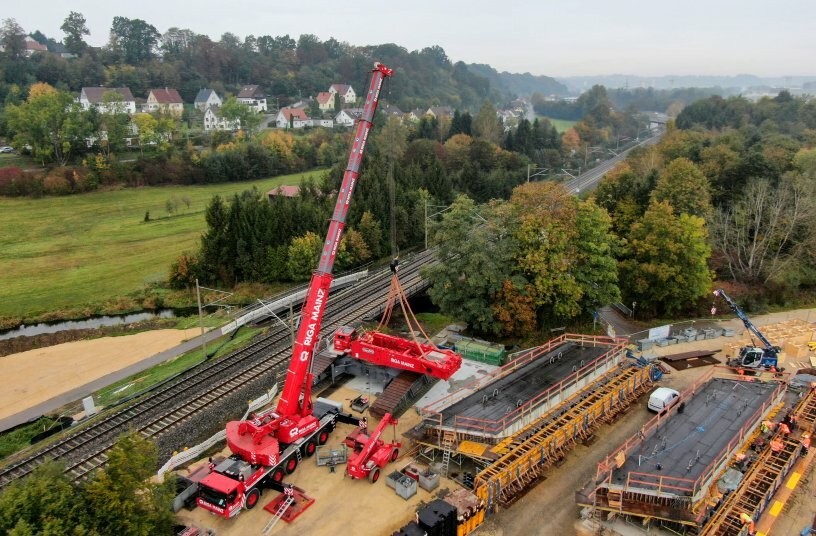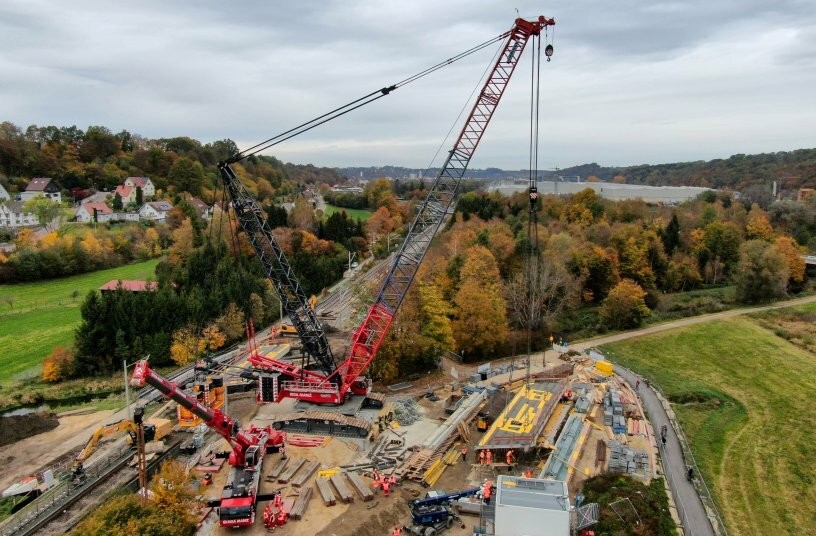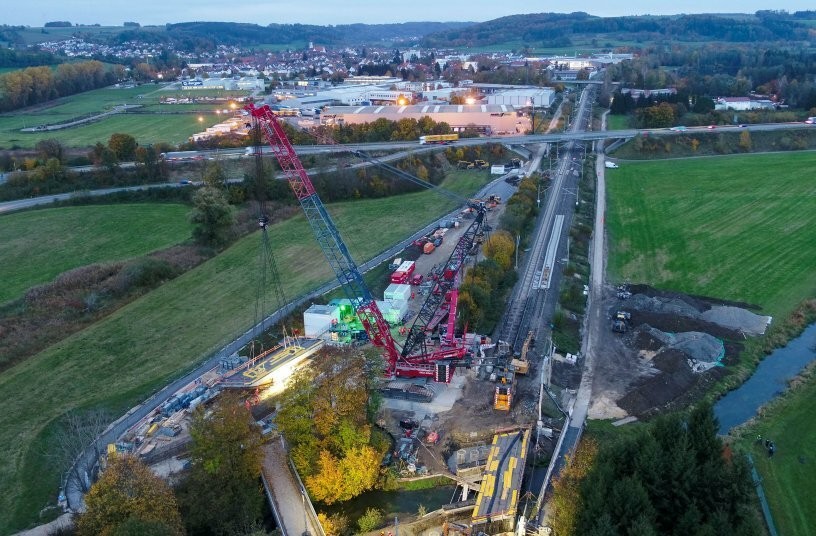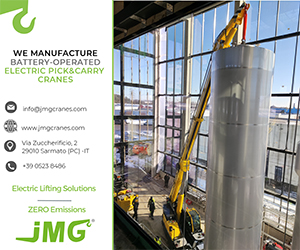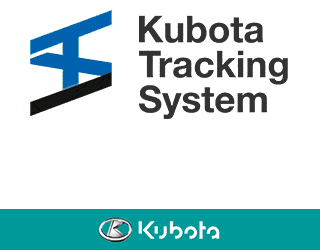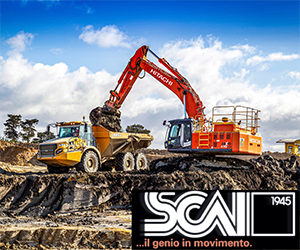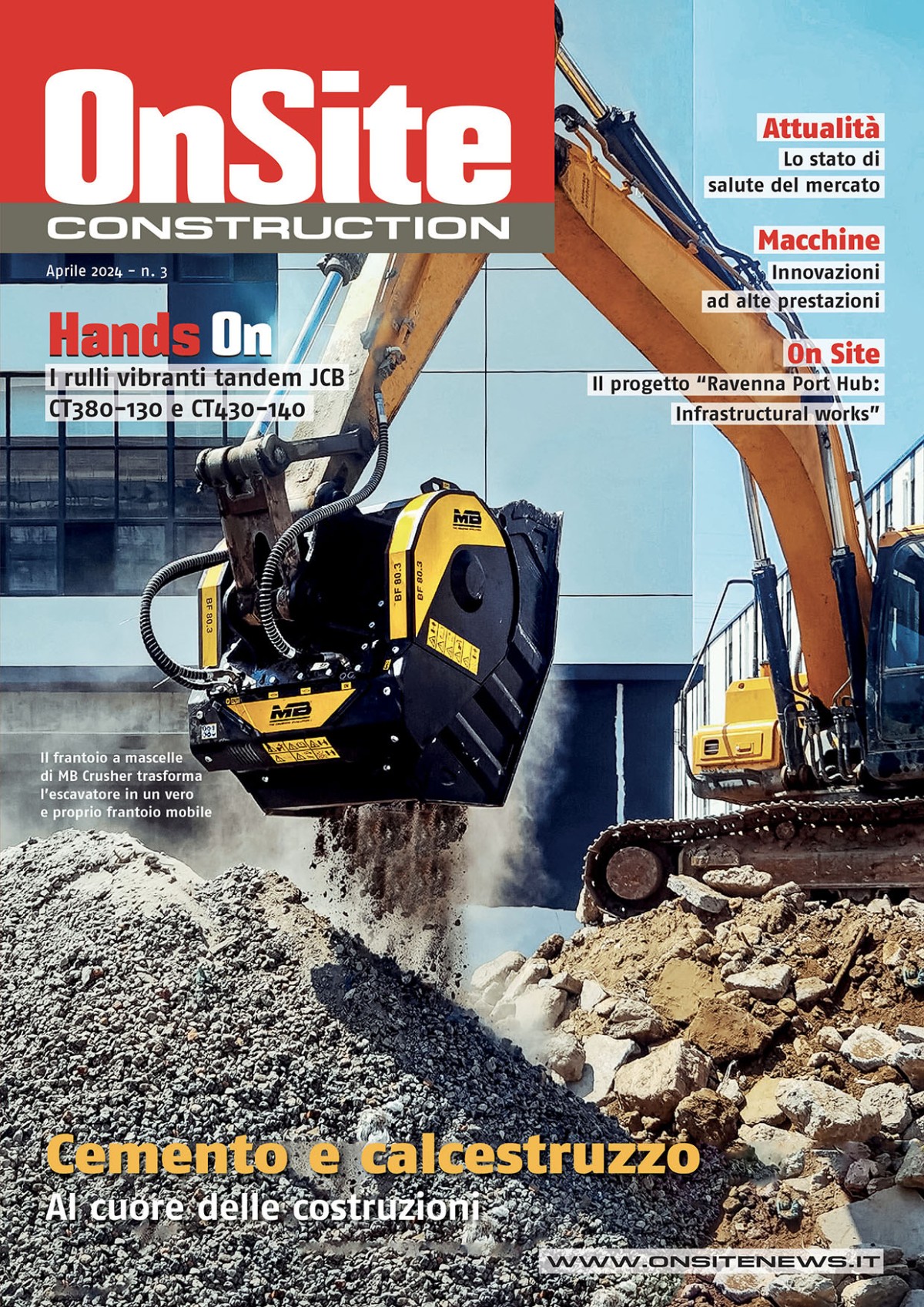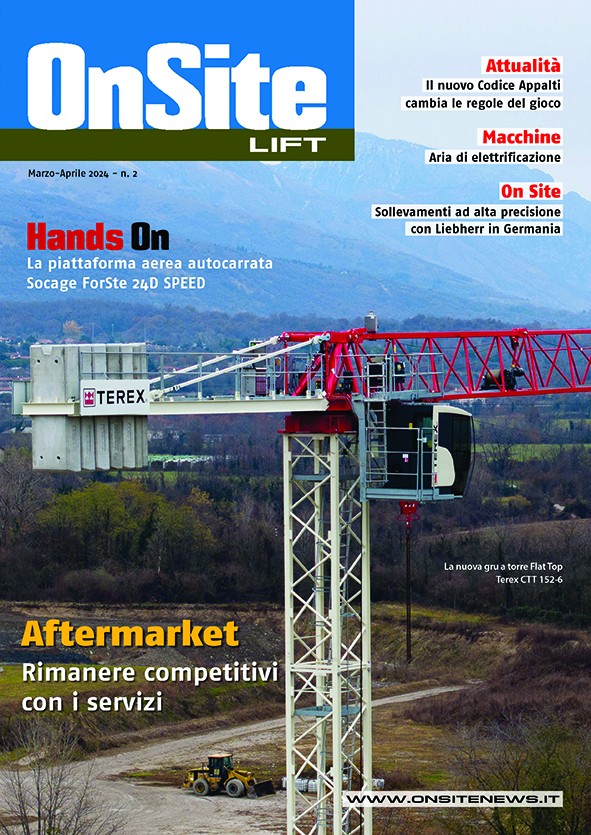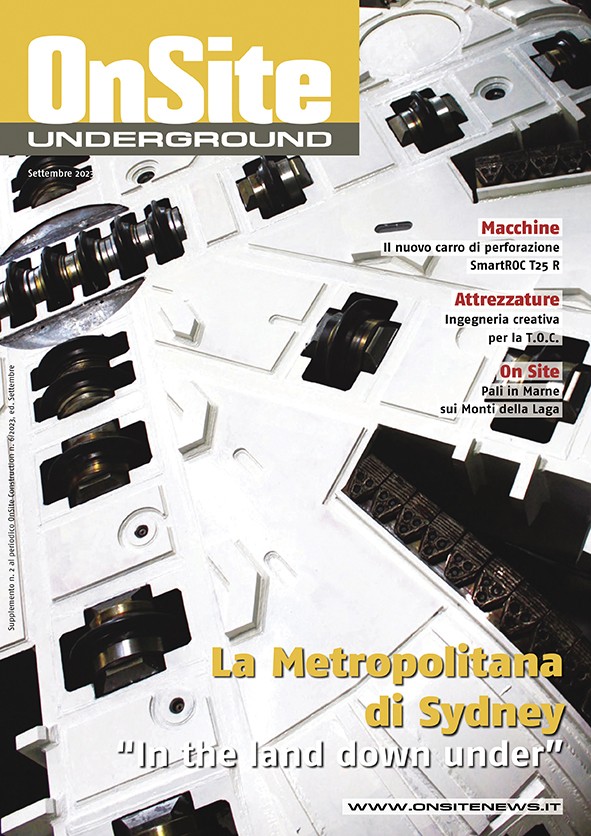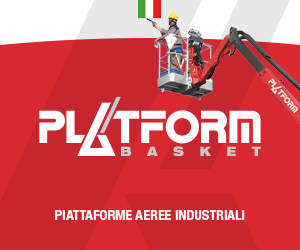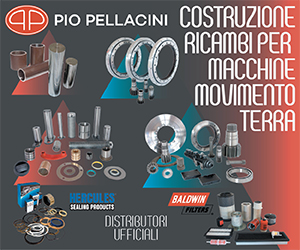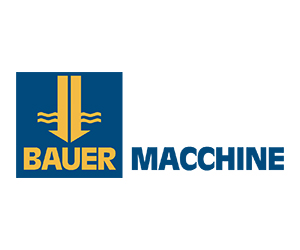Home \ International \ Riga Mainz replaces old railway bridge with Liebherr crawler crane LR 1750/2
Riga Mainz replaces old railway bridge with Liebherr crawler crane LR 1750/2
09/01/2024
Pubblicato da Ettore Zanatta
Riga Mainz utilized a Liebherr LR 1750/2 crawler crane to replace an old railway bridge over the Riß in Biberach, Germany, with new bridge sections weighing 285 tons each.
The German Railway has renewed a bridge over the Riß in Biberach. A Liebherr crawler crane LR 1750/2 from the crane and heavy haulage company RIGA MAINZ lifted out the old bridge sections and placed the new bridge in two parts, each weighing 285 tons. These were positioned on completely newly built abutments.
The old bridge over the Riß, a 49-kilometer-long tributary of the Danube in Upper Swabia, dated back to 1912, while the abutments were three decades older. Originally, the plan was to construct the new reinforced concrete bridge a few meters west of the old one, demolish the old bridge, and then slide the new one into the railway line. However, this plan was rejected because it would have meant a major impact on the environment. A new cycle and pedestrian bridge would have had to be dismantled and a small area of forest would have had to be cleared. It was therefore decided to build the new bridge to the east on a meadow using prefabricated parts and lift it into place by crane.
The contractor, Salcef Bau GmbH, awarded the contract to replace the bridge to the crane and heavy haulage company Riga Mainz, which used a 750-tonne crawler crane LR 1750/2 for the job. A 2-metre thick and 18 x 18 metre concrete slab was built on eight large bored piles to ensure the crane giant, which was equipped with a 49 metre main boom for this task, could stand securely. The assembly of the 750-ton crawler crane was no easy task. Company owner Uwe Langer, also responsible for project planning, reported, "The space conditions were very tight, as the newly constructed reinforced concrete bridges to be assembled were already placed on the construction site. In addition, we were restricted by surrounding trees."
For the construction of the new abutments, two large drilling machines produced a total of twelve bored piles with a diameter of 1.5 metres and a depth of ten meters. After the lifting of the new bridge sections, they were cast with concrete into the abutments to form a monolithic structure. This resulted in a ten-meter-wide and twenty-meter-long new bridge structure. The assembly and crawler crane teams did an excellent job, and the railway line had to be closed for only five days during this massive reconstruction.
The Riga Mainz team with crane operator Daniel Schleicher are full of praise for their crawler crane: "The LR 1750/2 was the optimum crane size for this job. It is compact and yet powerful. Larger cranes would not have been suitable in these tight conditions. Thanks to the variable ballast radius of the suspended ballast, we were able to make optimum use of the space."
The dismantling of the two old steel bridges, each weighing only 51 tonnes, was smooth. The two prefabricated new reinforced concrete bridges, each weighing 285 tonnes, posed a more significant challenge. The LR 1750/2 had to move a gross load of 300 tonnes, including the crane hook block and rigging, to a lifting height of up to 27 metres and an outreach of up to 25 metres. Various auxiliary tasks for the crawler crane, such as lifting an 85-tonne excavator at a 42-metre outreach, were also performed. The entire job took just over two weeks: Two days each for setting up and dismantling the crawler crane and ten days of operation - five night shifts were added to the ten day shifts.

Ultime notizie di Liebherr Italia
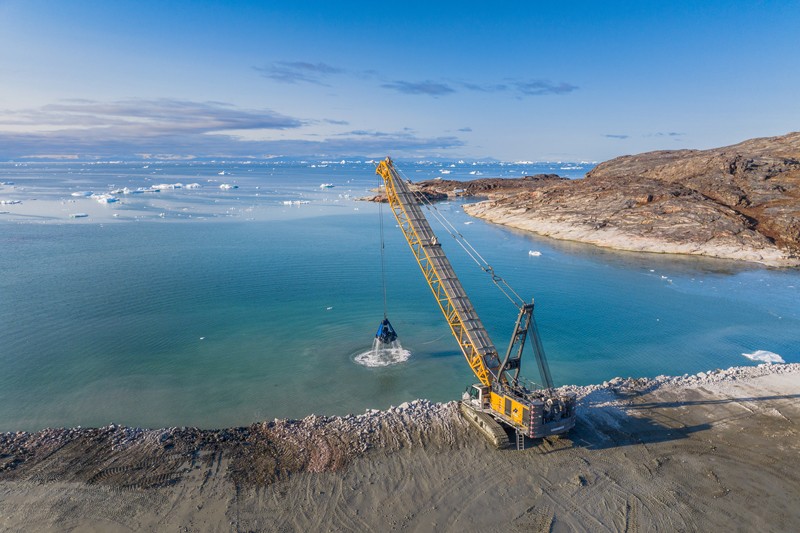
Lifting
22/04/2024
Liebherr is part of the largest construction project in Greenland's history
Around 250 kilometres north of the Arctic Circle, Liebherr i...
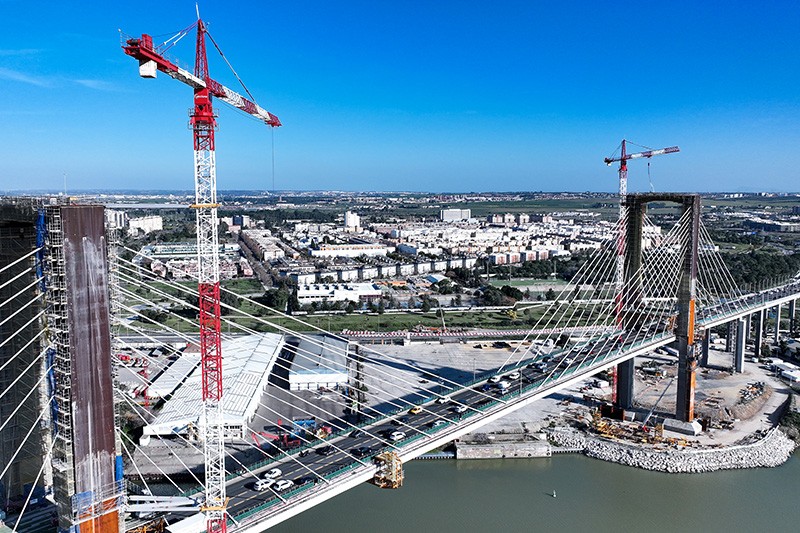
Lifting
15/04/2024
Liebherr tower cranes renovate bridge in Spain
Two Liebherr 420 EC-H 16 Litronic cranes are secured to the...
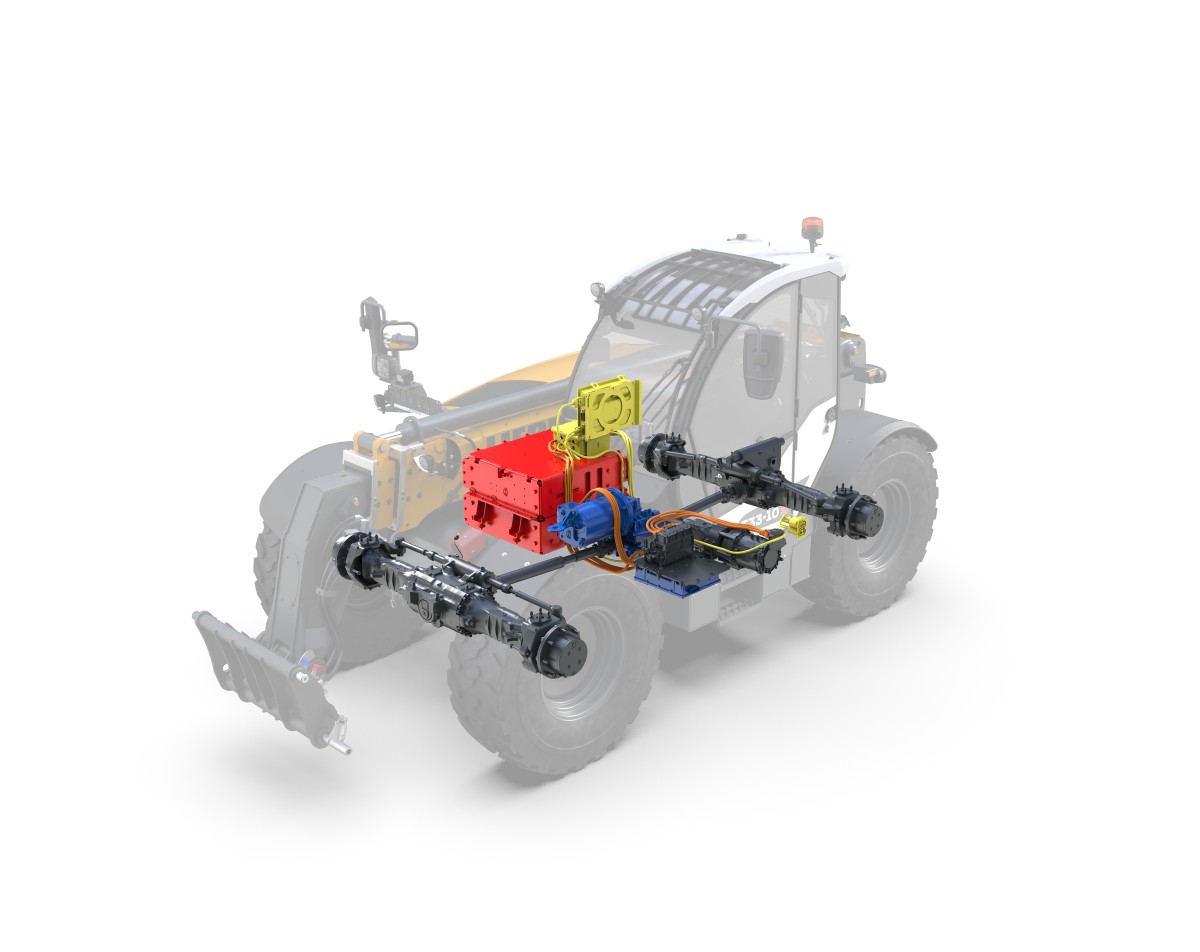
Lifting
08/04/2024
150-tonne lifting capacity: Liebherr expands its telescopic crawler crane line-up with the LTR 1150
Liebherr has expanded its range of telescopic crawler cranes...
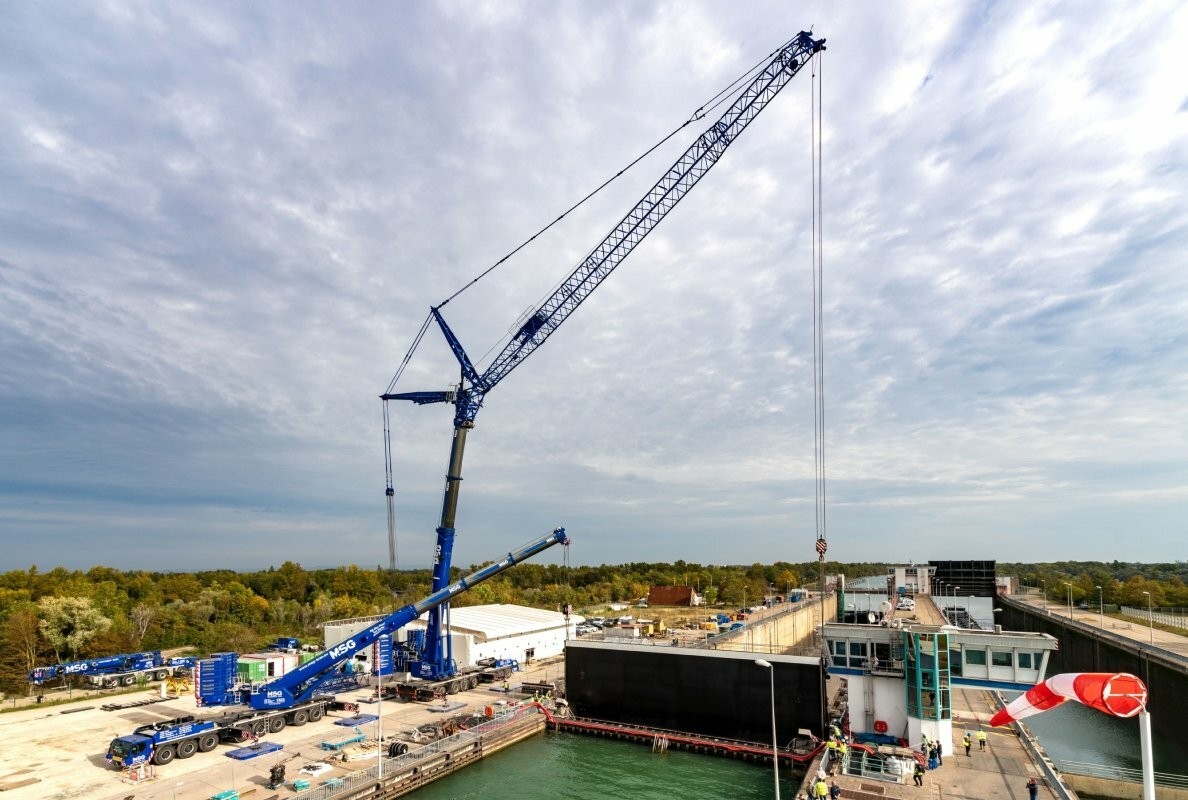
Lifting
11/03/2024
Expertise and Liebherr power in a two-pack
Liebherr LTM 1650-8.1 and LTM 1450-8.1 from MSG Krandienst a...
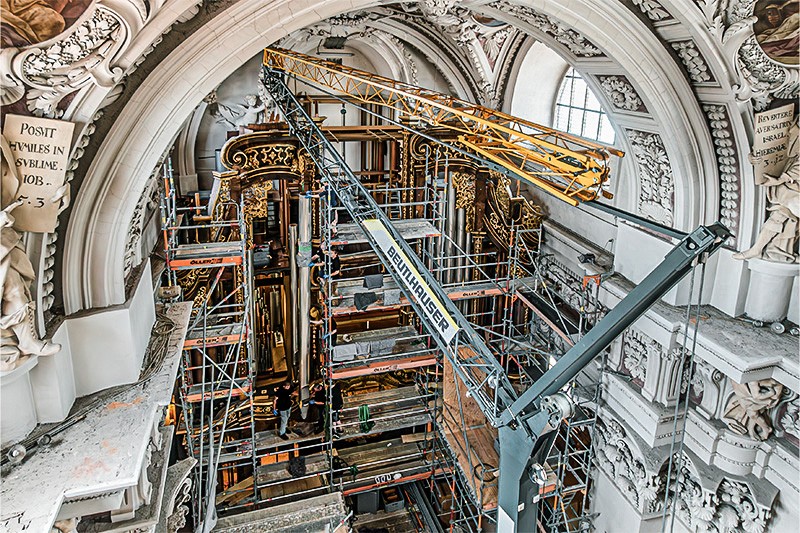
Lifting
12/01/2024
Liebherr L1 fast-erecting crane at work inside Passau Cathedral
Liebherr L1 fast-erecting crane at work inside Passau Cathed...
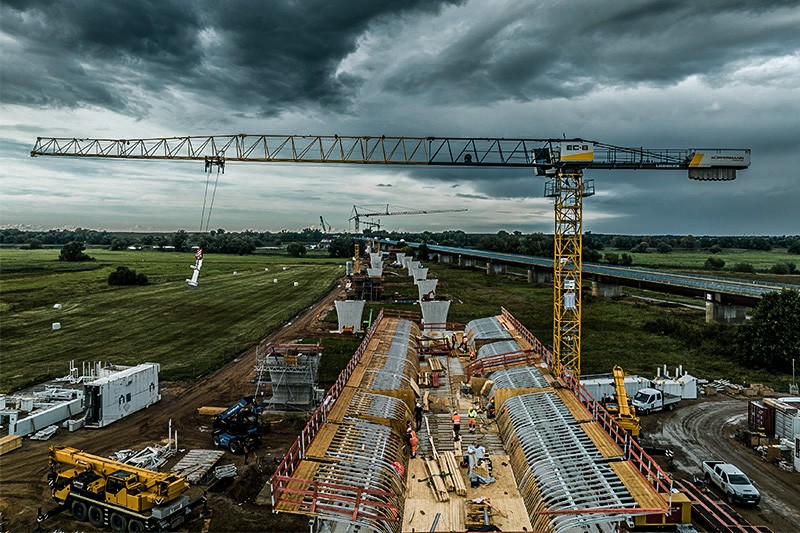
Lifting
22/12/2023
Liebherr tower crane works on unusual bridge construction
– Liebherr’s Tower Crane Solutions project department is pro...
Altri International

International
26/04/2024
Digitalisation and sustainability at the Wirtgen Group's "Technology Days"
Digitalisation and sustainability were the focal points of t...

International
26/04/2024
SVAB launches the successor to the popoular joystick Grip L8
At this year’s edition of Intermat in Paris on April 24-27,...
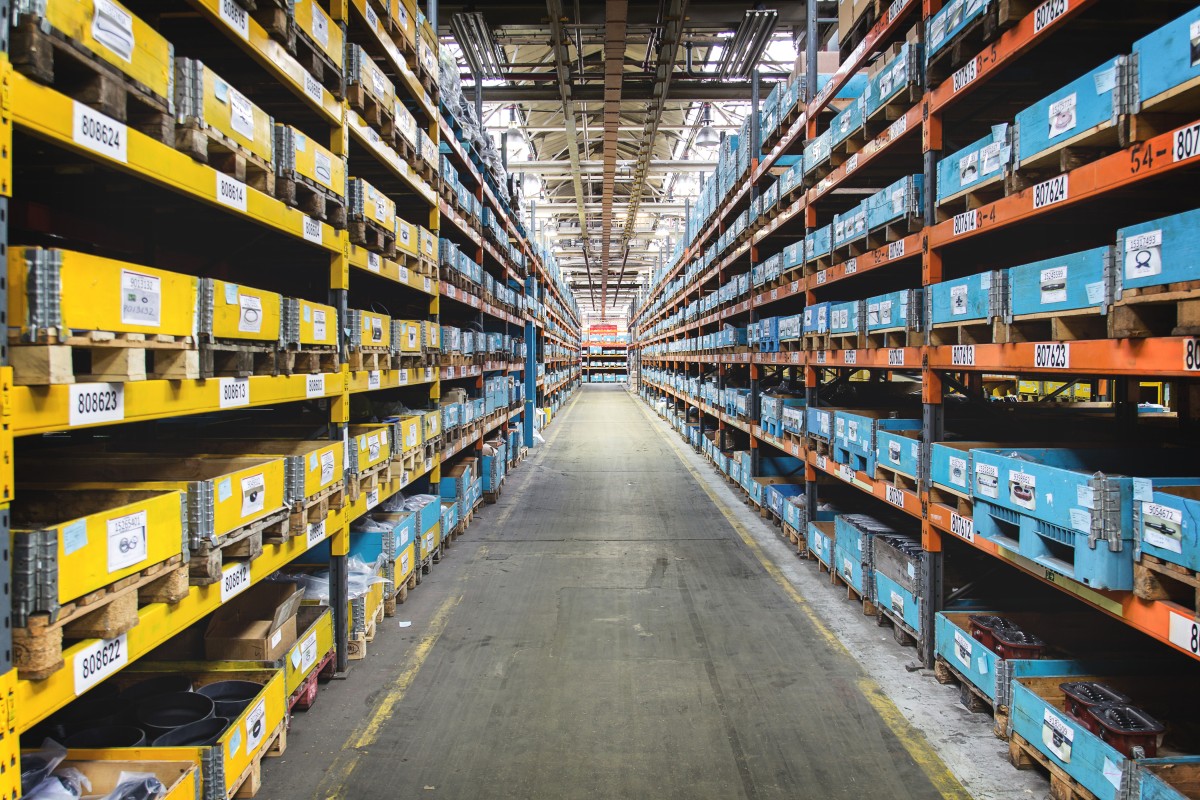
International
25/04/2024
Genuine parts ensure articulated hauler quality and uptime
The importance of good quality, reliable parts when maintain...
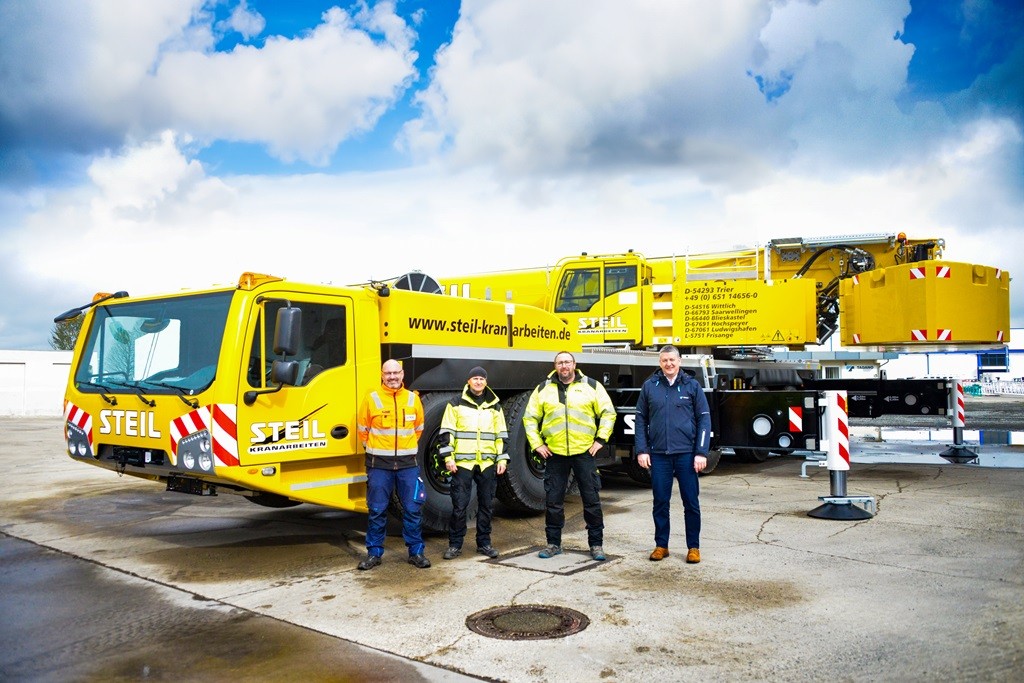
International
25/04/2024
Steil takes delivery of new Tadano AC 6.300-1 all terrain crane
Steil takes delivery of new Tadano AC 6.300-1 all terrain cr...
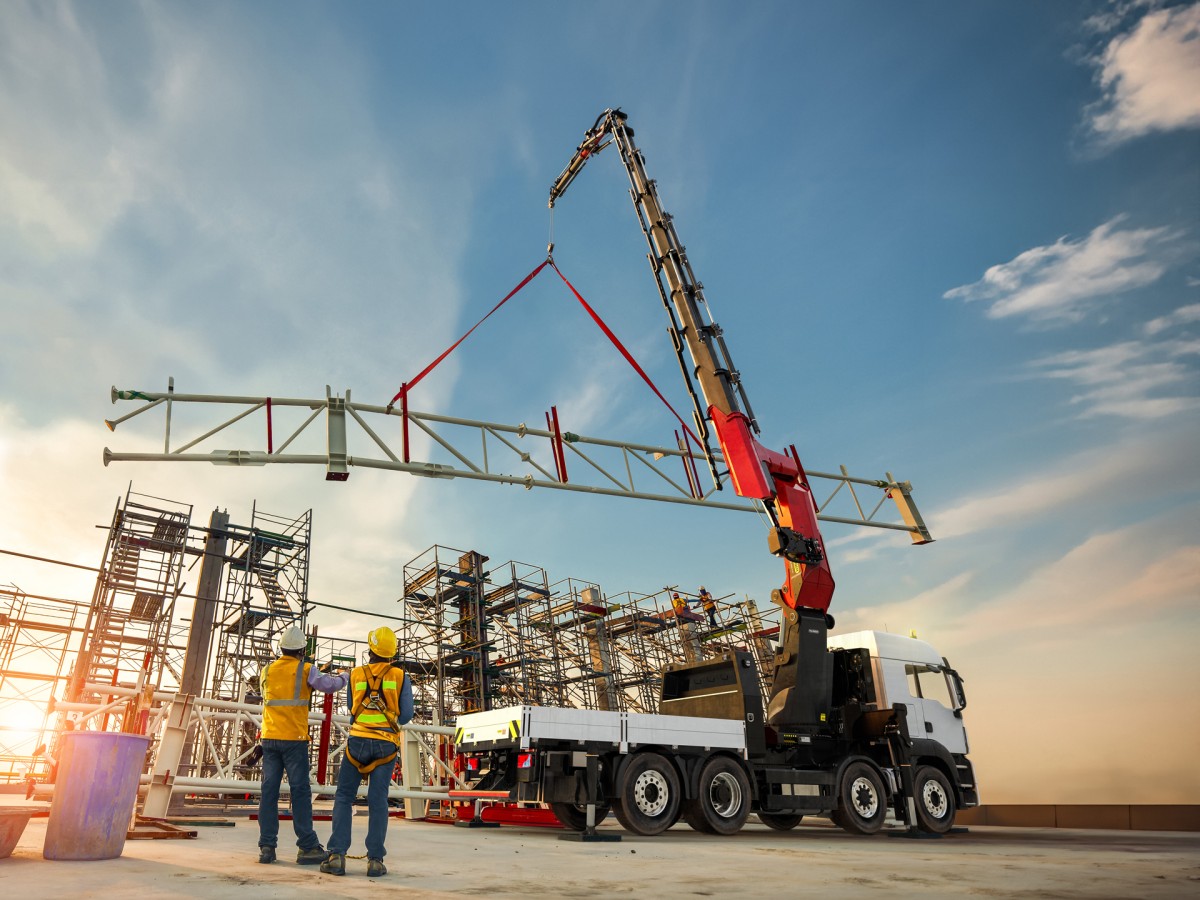
International
24/04/2024
New Palfinger's TEC Heavy-Duty Cranes Set Standards in Power & Precision
The new Palfinger PK 1350 TEC and PK 1650 TEC heavy-duty cra...

International
24/04/2024
SSAB and Manitou Group agree on fossil-free steel
Manitou Group announces the signature of a letter of intent...












